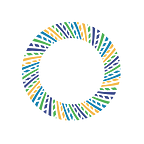Factivism in real life: Using mapping data to help protect girls from female genital mutilation
By Janet Chapman, Tanzania Development Trust
At 12 years of age, Rhobi Samwelly almost bled to death after being subjected to female genital mutilation (FGM) against her will. Since then, she has dedicated her life to helping save girls from a similar fate in rural Tanzania. However, until recently, her work was held back by the lack of maps of the rural villages where girls are most at risk. That’s why in 2015 I set up Crowd2Map, a volunteer crowd-sourced open mapping project.
Rhobi operates two FGM safe houses in Mara in Northern Tanzania, working closely with the local police gender desks. They often receive phone calls in the middle of the night informing them that girls are about to be cut in a remote village. These villages are often accessible only on very rough, unmarked dirt tracks. Before Crowd2Map, none of these villages appeared on a map, and it was very difficult to find them, particularly at night. As a result, Rhobi and the police were often unable to get to the girls in time to prevent them from being mutilated.
The Tanzania Development Trust set out to address this shortage of data in two ways. Firstly, online volunteers, based all over the world, contribute by tracing roads and buildings from satellite images. Then over 2,600 volunteer mappers in rural Tanzania use Maps.Me, a free smartphone app, on the ground to add points of interest, allowing navigation and the production of printable maps of remote villages.
So far, the mapping initiative has helped over 3,000 girls get to safety.
Since the project’s inception, over 14,500 volunteers have added villages, schools, hospitals, roads, and over 4.5 million buildings, into OpenStreetMap, an open source mapping programme.
Small grants have allowed us to recruit more female volunteer mappers. Previously, we had to rely only on people who already had a smartphone. In rural Tanzania, that group was mostly men. Female mappers faced additional challenges. Local men sometimes mocked them, suggesting they should be back at home cooking. Some men even tried to lure them to isolated places to attack them. But they persisted because they thought it was important that their communities were on the map, counted, and that these maps could be used to protect women and develop their communities.
We have now trained the local police and FGM activists to easily find focal points in each village, and add missing places to the map. We have also trained protection committees in each of the 78 villages in Serengeti District to map their villages, and encourage printed paper maps to be displayed in each village office; in many cases this was the first time people had ever seen a map of their local area. We also trained a digital champion in each village to report incidents of gender-based violence via an open source app Open Data Kit.
This success led to an invitation to run a mapathon at the UN General Assembly in New York in 2018. We coordinated open mapping groups in 60 other countries to take part in simultaneous satellite events.
Nafissatou Diop, Senior Advisor and Coordinator for the UNFPA-UNICEF Joint Programme on the Elimination of FGM, said that using the mapping technology to help girls at risk of FGM works in two main ways:
- It helps local NGOs, grassroots organizations, activists, and police physically get to the girls at risk. Many remote villages are very poorly mapped, so if an NGO receives a tip from community members that a girl is in danger of FGM, the information supplied by the open source maps can get them to the destination as quickly and as safely as possible.
- It informs the girls and their communities about rescue centers and safe houses. Although most at-risk girls don’t own smartphones, they are still accessing information on rescue center locations from drivers who are working with NGOs, grassroots organizations, and local police to help spread the information to the girls.
Be a factivist and turn data into change by following the link to our mapping page here — anyone with an internet connection can help!
